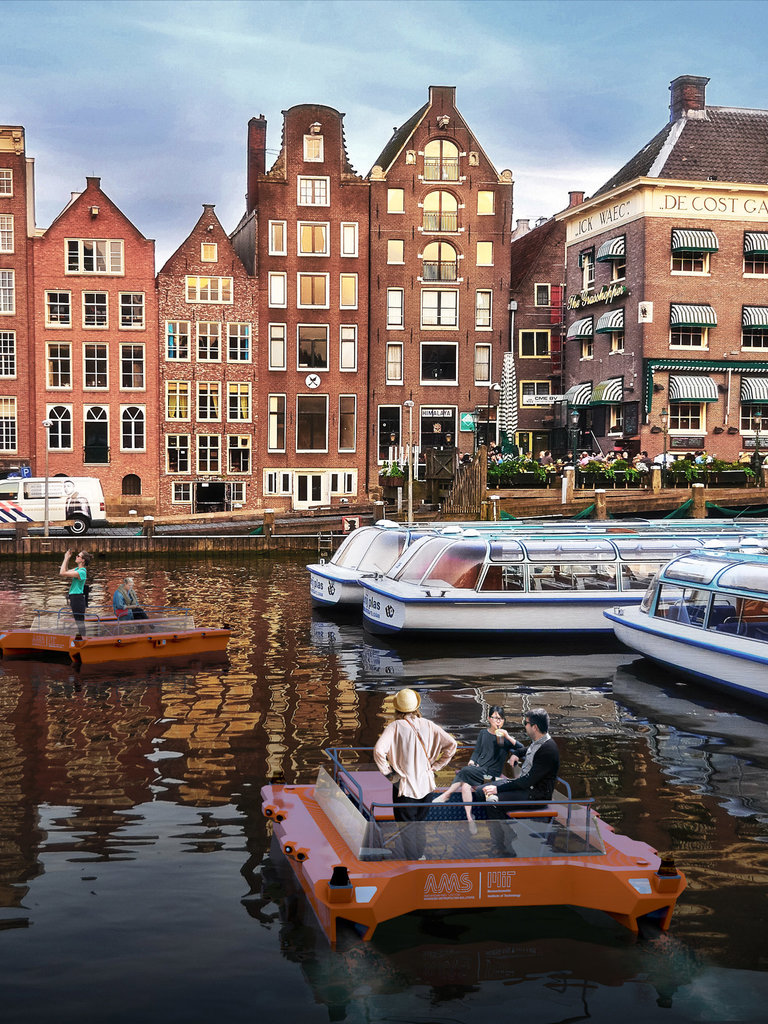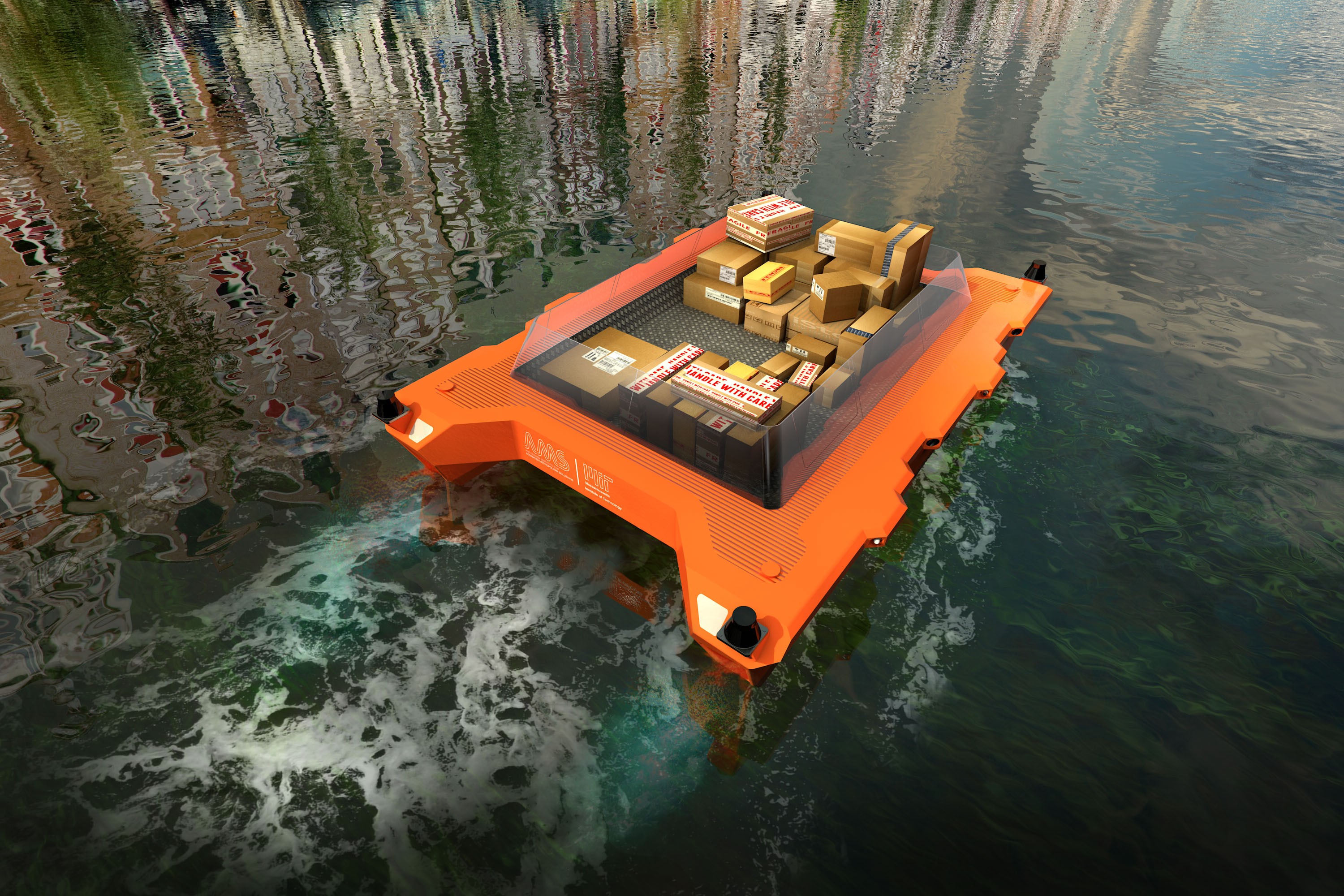
“In a few years’ time, Roboats will be collecting waste in Amsterdam”
Autonomous boats can help solve a variety of metropolitan challenges
By: Jurjen Slump
When you think of Amsterdam, you think of canals. So it’s only logical to include the city’s waterways for solutions to challenges faced by the metropolis. One of AMS Institute’s most eye-catching projects
is Roboat. In the future, these autonomous boats will be used for numerous applications: from waste collection to inspecting quay walls.
''Roboat is more than a self- driving boat”, says Stephan van Dijk, head of Research and Valorisation at AMS Institute. Van Dijk sees the Roboat as a platform that can be used for all kinds of things. Obviously,
you can use it for carrying goods and people. “But you could also line up the boats to build a temporary footbridge. Or use them as a floating stage on the water.” By linking them together, Roboats could also be used to build all kinds of structures.
Floating supermarket
City planners are excited about the idea, because it adds flexibility to the urban infrastructure. “Today, things still have a fixed place, but in a few decades’ time you may well stumble across a floating market or temporary supermarket on the water.” Inspection of quay walls and bridges is another task for which the autonomous boats could be used. There are more than 200 kilometres of waterways in Amsterdam, and they will require a lot of maintenance in the coming years. At present, there is simply not enough manpower available to inspect all the city’s waterways. But with Roboats, this will happen automatically. During its journey, the boat automatically records its surroundings - bridges, quays, houseboats, obstacles on the water – with LIDAR and stereo- cameras, which can be analysed afterwards by image analysis software.
Water quality
Or how about measuring water quality? That’s also something that can be easily combined with the other tasks performed by Roboats. They will soon be plying the city’s waterways,
enabling the city to accurately monitor surface water quality. This will be done in close collaboration with Waternet. Although many of the applications are still a thing of the future, the project team is actively working on developing use cases where Roboats can be used to collect household waste in the Amsterdam city centre. At present, this is a major problem. “There is hardly any room on the narrow streets of the canals, and we have 17 different waste collection services driving through the city with large trucks, causing traffic jams”, summarises Van Dijk. Moreover, it is very difficult to construct underground containers, because in many cases the quay walls are fragile and unsuitable for this purpose.
Floating waste bins
A fleet of Roboats could manage those tasks. This works as follows: floating waste bins are moored alongside the quay. Using a smart system, people can throw their waste from the street into the bins, just as they are used to doing now. The waste bin is fitted with a sensor which transmits a signal when the bin is full, and along comes a Roboat which disconnects the waste bin from the quay and takes it to the waste disposal plant. In the meantime, another Roboat arrives with an empty waste bin to replace the full bin. All of this is done at night, because the Roboats are fitted with electric motors and are therefore very silent. “With around forty of these floating waste bins and a few self-driving Roboats, you can dispose of the same waste volumes that we handle today, servicing 1100 households”, says Van Dijk. The Roboats themselves determine the ‘smartest’ route and can have multiple waste bins in tow at a time.
This gives us true insight into the issues at hand. As a result, our innovations have a greater chance of succeeding in the market. Because there is a demand for them
